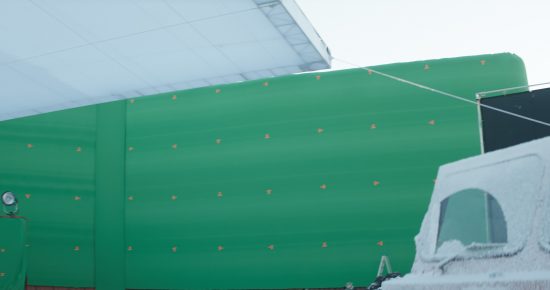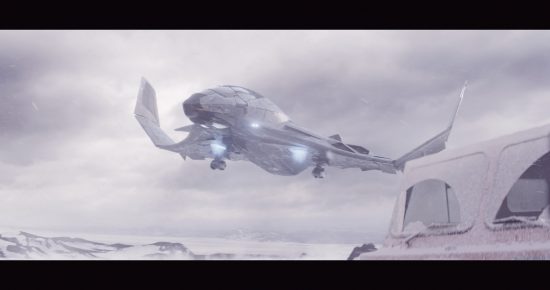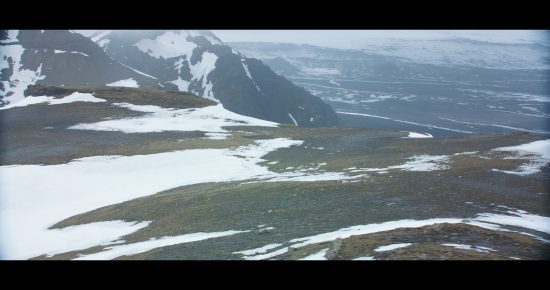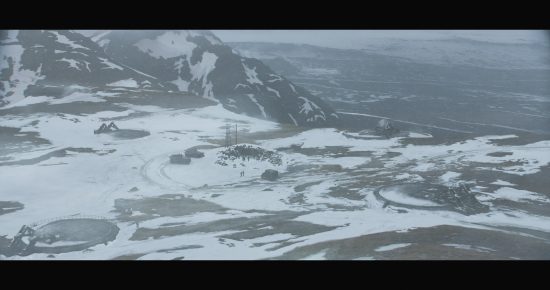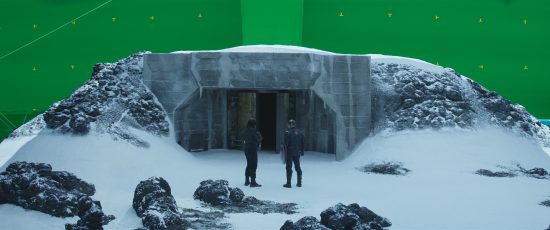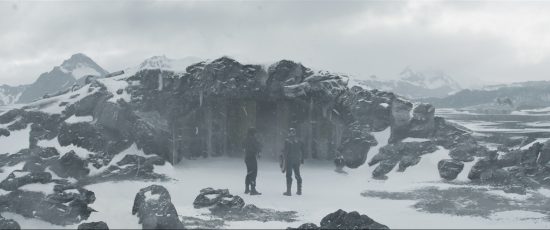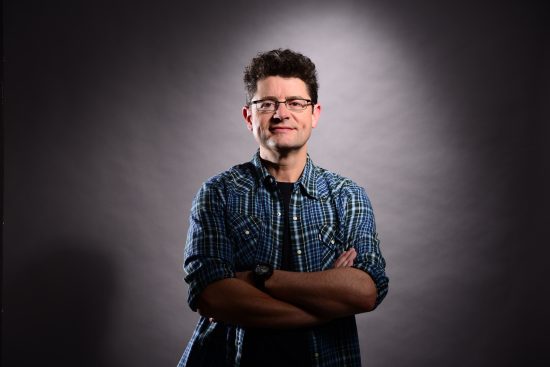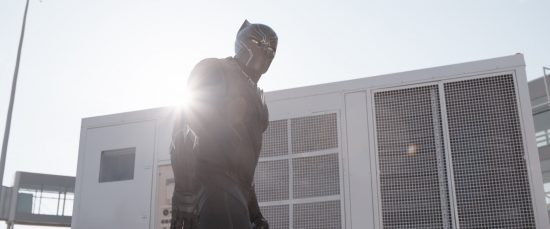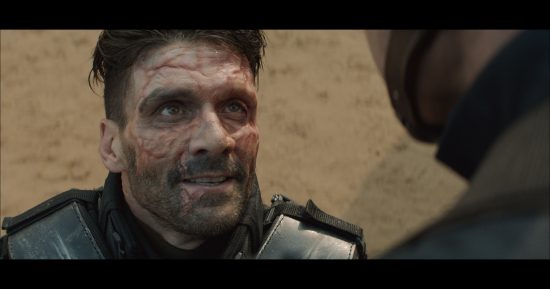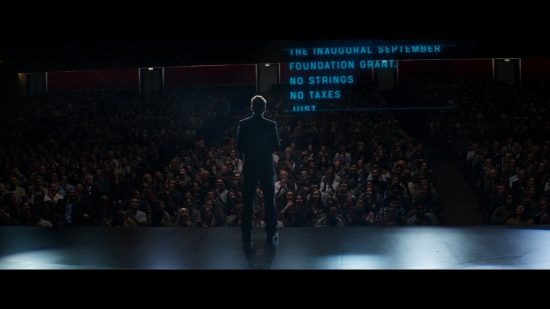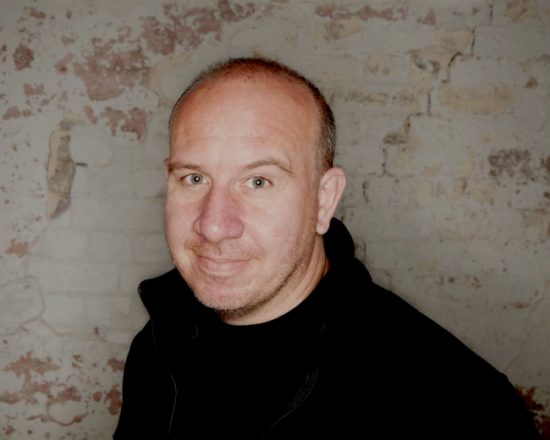Team Effort: Cinesite, Lola VFX, Animal Logic & Captain America: Civil War
Trevor Hogg looks back at the visual effects created for Captain America: Civil War by speaking to Cinesite, Lola VFX and Animal Logic…
A group of visual effects companies from around the world consistently contribute to the Marvel Cinematic Universe and among them are Cinesite, Lola VFX, and Animal Logic; they were called upon once again by Marvel Studios Visual Effects Supervisor Dan DeLeeuw to do various tasks ranging from snow effects, envisioning an otherworldly being, holograms, and HUD graphics for Captain America: Civil War.
Delivering 80 visual effects shots was Cinesite VFX Supervisor Simon Stanley-Clamp who utilized Photoshop, Maya, Houdini, Nuke, Silhouette, After Effects, and Ftrack. “Cinesite came on board late into production. There was a definite brief to work with, a locked cut, prebuilt assets and plenty of references to match to except for an exact look for the Black Panther.” Dan DeLeeuw conducted conference calls via cineSync where he would run through cuts and incorporate editorial temps, previs or postvis. “There was a lot of pre-existing reference such as concept art, previs and postvis as well as the growing ‘library’ of films in the Marvel Universe. Everyone knows what Cap’s shield should look like or Bucky’s arm or a Quinjet or a Hydra soldier.”
“Production supplied Cinesite with many aerial plates of Iceland for the Siberian Environments which we were able to stitch together or take sections from to construct our Hydra missile base,” states Simon Stanley-Clamp. “For the rock-covered entrance to the base, we completely remodelled the rockwork, replacing everything from the set piece to create a more organic appearance and really buried/bonded it to the mountaintop.” Snow effects needed to be produced. “I’d just come off another movie featuring light flurries to more heavier down pours of snow – so I had a pretty good understanding of what was needed and used those setups from Houdini as a starting point. From our first passes, Dan gave further direction for us to edit.”
“Production supplied the Black Panther model and textures,” remarks Clamp whose toughest creative challenge was nailing the look of the African superhero making his big screen debut. “Textures went through three upgrades during the time we were working on the shots. We rigged Black Panther for our pipeline. In our first sequence, we had to completely replace the practical on-set suit, and exactly match move the actor’s performance. We used the shot plates as a starting point for our look development, from there working up more detail for the tight, woven armoured mesh the suit is constructed from. Throughout the show, Production was insistent that the suit should not look like a [rubber] wet suit and have a metallic, chain mail like quality. It’s a subtle look, which we nailed for the snow sequences and adapted for the rooftop fight sequence and again for the interior bunker shots.” Other responsibilities for Cinesite included Scarlet Witch costume fixes, full CG Quinn jet animation and weapon concept work. “A short, but rewarding experience, working for the slick, well oiled Marvel machine,” notes Clamp. “We even got to produce large format [8K] rendered stills for a few of the posters and magazine covers – just as difficult as some of the shots!”
Captain America: Civil War marks the 11th Marvel Studio movie for Lola VFX. “Altogether we completed nearly 200 shots,” states Lola Visual Effects Supervisor Trent Claus. “Roughly 80 of which were continuing our work of bringing Vision to life, combining the performance of Paul Bettany with a CG head and facial features. “We have a few scenes in which Vision really gets to interact with fellow characters in expressive and emotional ways, which has been exciting to work on. Overall his look hasn’t changed too much from Age of Ultron, but of course the lighting situations and environments that he’s in have changed, so how his skin and other surfaces interact with the surrounding environments had to be re-examined for every scene. We completely rebuilt Vision’s model and rig to give us more control over his animation and to help us to better match Paul Bettany’s performance.”

“With Vision we always start with the performance and work from there,” notes Claus. “All animation is done using Paul Bettany’s performance as a guide, and then when it comes to his facial features and expressions, we utilize tracking dots on his face to help our compositors match how his face moves and emotes. It’s essential that the CG reacts as though it were actually there in the scene so that it never becomes a distraction, and the audience can focus on the character and performance.” The assignment was assisted by a propriety lighting rig. “With our rig we are able to recreate the conditions of a shot that was created on set, and apply those conditions to the performance of the primary actor. Our compositors can then take the actor’s footage and seamlessly blend it into the original shot. This allows for far greater freedom for the filmmakers. For instance, instead of having to shoot certain dangerous shots wide, or while hiding the face of the character, now the shot can be done in close-up with the actor’s face in full view of the camera allowing the audience to see and relate to the emotions that they are portraying.”
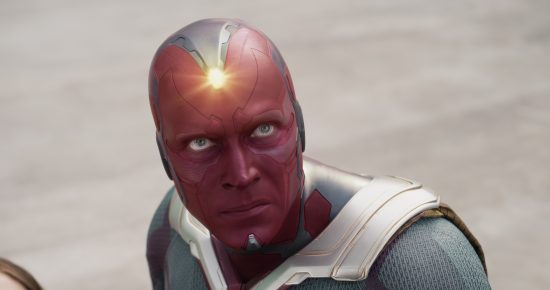
A burned-skin effect was a combination of prosthetics and digital effects. “With the facial modifications on Crossbones, our matte painter Rob Olsson delivered a few concept ideas for what the burns would look like, and then once a look was selected, our compositors used that design as reference for their shots,” explains Trent Claus. “We began with a 3D track and rotomation of the actor’s face. Our compositors were then able to apply a series of matte paintings and other effects that added detail and augmented the in-camera prosthetic work. Digitally we were able to apply a number of subtractive effects that are not possible with prosthetics, like the partial removal and deformation of his lower eyelids or the reduction in mass of his cheeks.”
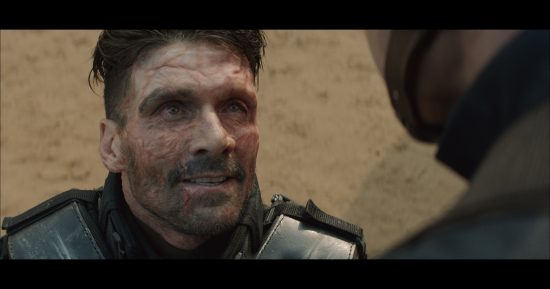
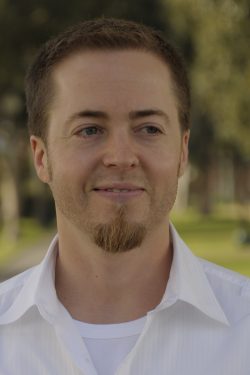 “We de-aged Tony Stark approximately 30 years for an extremely challenging scene in which he interacts with his parents,” remarks Claus who primarily uses Autodesk Flame and Maya as well as PFTrack, Nuke, and V-Ray. “There was also the ‘phasing’ effect when Vision passes through other objects or characters. One of our lead compositors, Brian Hajek, created a series of various energy effects that occur when Vision reduces his density. The final effect has an atmospheric element reminiscent of the Mind Stone [in Vision’s head] that’s visible within his body as it becomes transparent, as well as an electricity-like energy element that intersects with other objects. When transparent, there’s an additional yellow-metallic energy that partially outlines his form and helps to define his three dimensional shape by allowing us to show parallax through his body.”
“We de-aged Tony Stark approximately 30 years for an extremely challenging scene in which he interacts with his parents,” remarks Claus who primarily uses Autodesk Flame and Maya as well as PFTrack, Nuke, and V-Ray. “There was also the ‘phasing’ effect when Vision passes through other objects or characters. One of our lead compositors, Brian Hajek, created a series of various energy effects that occur when Vision reduces his density. The final effect has an atmospheric element reminiscent of the Mind Stone [in Vision’s head] that’s visible within his body as it becomes transparent, as well as an electricity-like energy element that intersects with other objects. When transparent, there’s an additional yellow-metallic energy that partially outlines his form and helps to define his three dimensional shape by allowing us to show parallax through his body.”
“I’m partial to Vision since we’ve been so involved in the character’s development, from his ‘birth’ in the last film, to his relationships with other characters in this one,” reveals Trent Claus. “I’m excited to see his growth as a character in this film. But more than that, as a fan of the Marvel Cinematic Universe in general, I’m excited to see all the scenes that I haven’t gotten to see yet, and to see how all the pieces fit together!”
It is misleading to say that Animal Logic was responsible for six shots considering the opening one which has a 20 year old Tony Stark interacting with his parents is 4000 frames long. “The scene was invented by Robert Downey Jr. who has become famous for interacting with these virtual worlds and Stark technology. Robert came up with this brainchild of, ‘What if I start inside one of my memories and you reveal that it is part of a keynote speech that Tony Stark is giving at MIT.’ The movie audience doesn’t realize that they’re in this VR world until it starts to fall apart when he switches it off. This could be the future of VR technology if it ever gets there.”
“Lola VFX did an amazing job of de-aging Robert Downey Jr.,” remarks Animal Logic Visual Effects Supervisor Paul Butterworth. “They pulled his guts and shoulders in. We did the background and the devolving of that scene to make it look like a projection system. Essentially when the camera pulls out wide you realize that Robert is on a stage talking to an audience. At the time they had a small group there and the rest of the auditorium was empty. We didn’t have any elements for that so we then shot a whole bunch of volunteers from Animal Logic to be in the background. They’re all cheering and clapping away at Robert while he is giving his speech.”
“You’re starting off with building a plate with two Robert Downey Jr.’s and stitching them together neatly,” explains Paul Butterworth. “As soon as he reaches over the piano and blows out the candle [on the piano] that triggers a pulse through the photography. You begin to see pixels and grids as those pictures devolve back to the Iron Man look that you’ve seen in the past and it shuts down. You’re left with grey boxes that represented the sofas, cupboards and the piano.” The duration of the initial shot did allow for imperfections. “We had to get it pixel accurate. Matte edges had to be perfect. All of the tracking markers had to be painted out. We had lots of shiny surfaces where things had to be retouched. We had focus pulls that had to match between multiple plates that weren’t. It wasn’t motion-control either. We had to retrack a plate, rebuild the other environment, and track that in neatly.” Butterworth adds, “It will be interested to see how the audience reacts because it will be one of those WTF moments!”
Imagery courtesy of Disney, Marvel Studios, Cinesite, Lola VFX and Animal Logic.
Many thanks to Simon Stanley-Clamp, Trent Claus and Paul Butterworth for taking the time to be interviewed and for more information visit the official websites for Cinesite, Lola VFX and Animal Logic.
Trevor Hogg is a freelance video editor and writer who currently resides in Canada; he can be found at LinkedIn.

